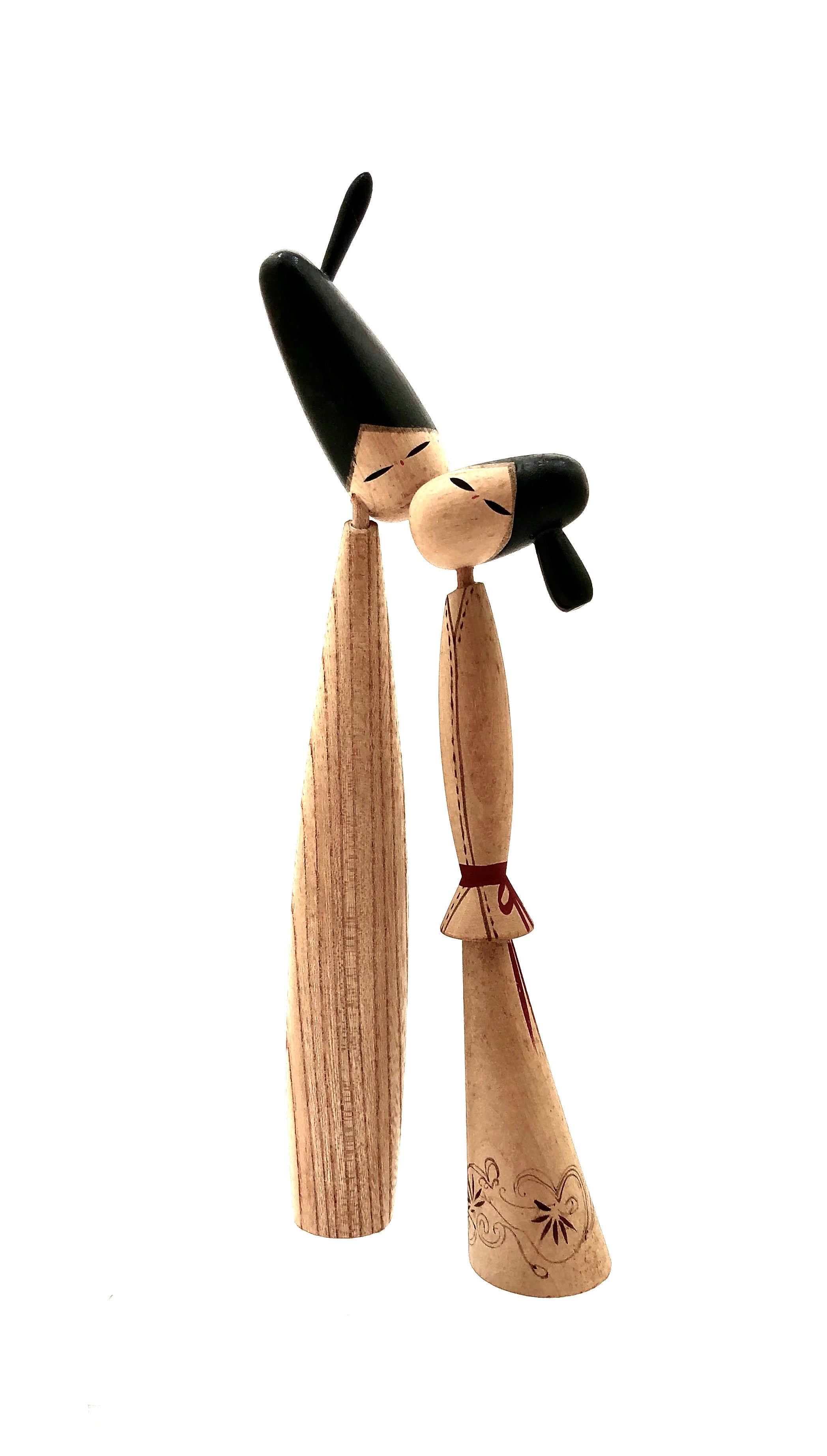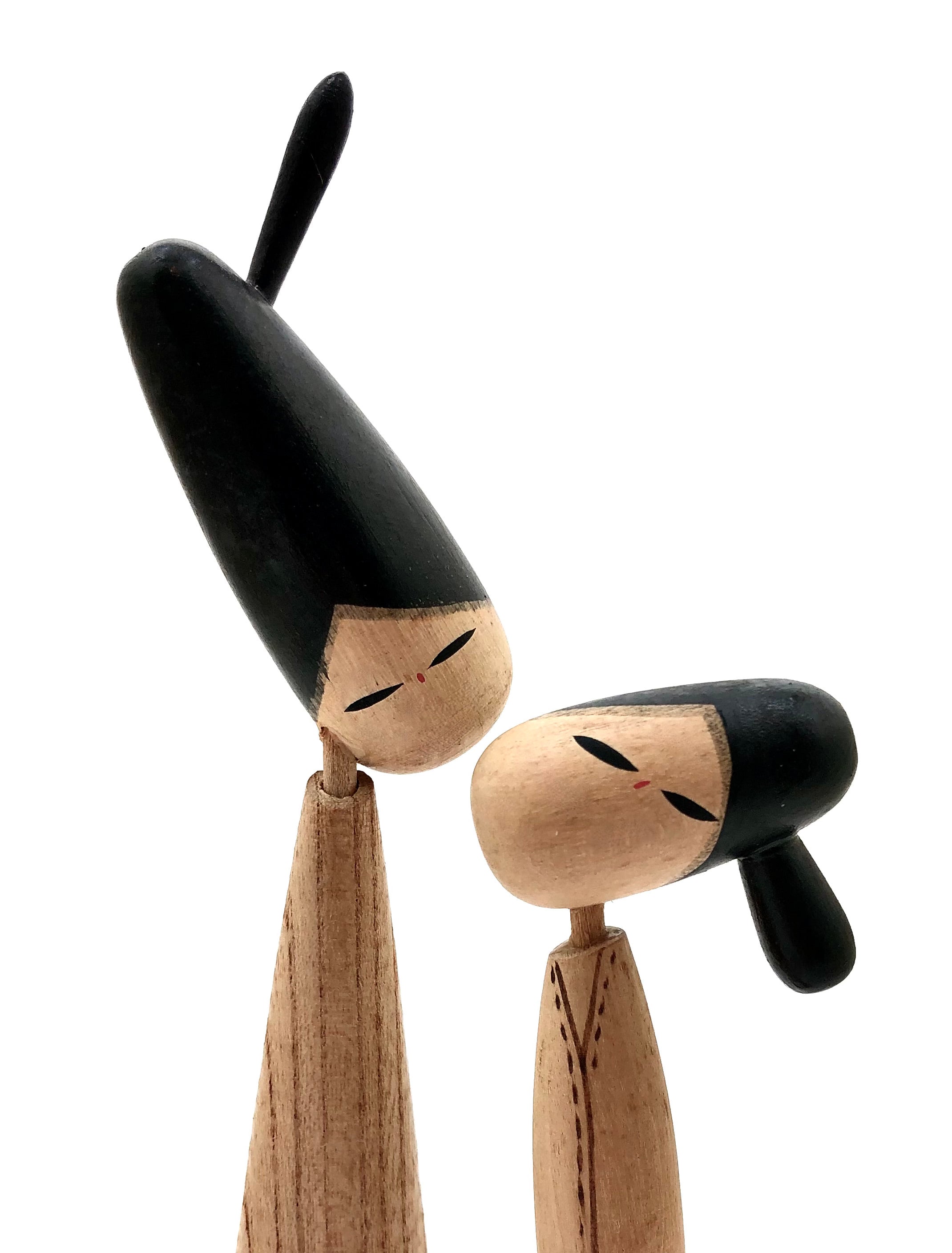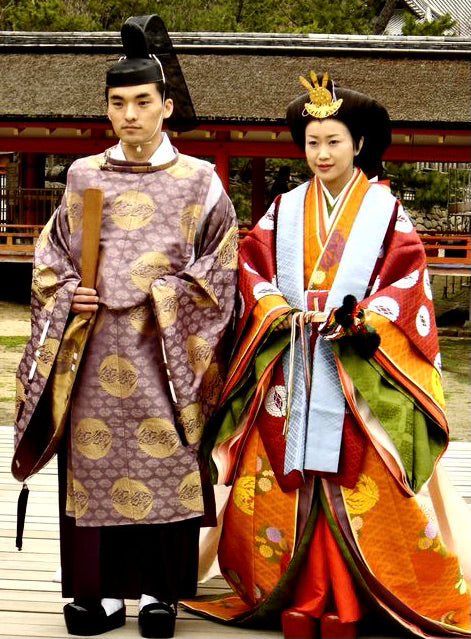



Vintage Sosaku Kokeshi by Murakami, Chieko | Exclusive Heian Inspired Kokeshi
Dimensions: Female - 7-1/2”h; Male- 10-0”h
This is a lovely pair of Vintage Sosaku Kokeshi entitled: Hohozuri, (Cheek to Cheek) are crafted depicting a couple from the Heian Era (785-1185). The Japanese people, artists, and craftsmen respected and treasured history. Here, the craftsman demonstrates his appreciation through the creation of surreally abstracted juxtaposed figures of the Kokeshi form composed of only two parts; the head and body with no arms or legs, and interpreted in a very contemporary manner.
The pair represents a young man and woman of the period, both made of Kashiqa, (oakwood), with figures in its most basic cylindrical form, both in expressive standing positions. Each show tilted heads and characteristic eyes showing feelings between the couple. Each has authentically, fashioned hairstyles of the period with the female's garment delicately detailed in red and brown line work completing this artistic expression. These vintage modern Kokeshi dolls, categorized as ‘Sosaku Kokeshi’ (lit. ‘Creative Kokeshi doll’) celebrate Japanese history through such periods of inspiration.
Condition: Excellent and commensurate with age with no scratches, flaws, or discoloration and well-proportioned figures. The photo supports the description/condition.
NOTE: According to “Topics in Japanese Cultural History”: Women of aristocratic status spent most of their time as adults sitting in their residences. These residences generally had a few very large open rooms. Portable screens made of fabric and curtains were the major means of dividing these rooms. With servants and attendants to do all the work, including taking care of children, there were relatively few pressing matters requiring attention. “Boredom was a problem for many aristocratic women as they sat behind screens with their attendants. Although women could and sometimes did leave their residences on recreational outings, slow, plodding, uncomfortable ox-drawn carriages and the many social rules about appearance in public often made such outings tedious. Men, by contrast, could always busy themselves with the duties of their political offices.
